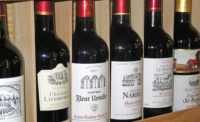Beverage Can Market to Grow at CAGR Above 3% to 2022

The global beverage cans market is expected to grow at a CAGR of above 3% during the period 2018-2022, according to a new market research study by Technavio (www.technavio.com).
The report categorizes the global beverage cans market by materials (aluminum and steel) and by application (non-alcoholic beverage and alcoholic beverage). The report also breaks down the market impact, which includes key geographies such as APAC, the Americas and EMEA.
Beverages such as beer, soft drinks, ready-to-drink tea and coffee, and juices use metal cans extensively. The augmented need for metal cans is one of the major factors driving the growth of the global beverages cans market. Due to the various advantages of metal encasing products, metal packaging is preferred over other packaging types. A hermetic seal is the quality of metal cans or glass containers of being alright. A better hermetic seal is provided by metal cans which is due to better sealing properties to restrict the flow of gases. Metals cans are also less prone to breakage during transit.
“As the properties of the material remain unaffected when exposed to heat or higher temperature, metals cans are used in fast-processing or varied temperature environments. Thus, it is expected that there will be an increased need for metal cans during the forecast period.," said a senior analyst at Technavio for packaging research.
Growing concerns among consumers regarding the environmental impact of metals and plastic cans has made paperboard cans more popular. Paperboard cans are made from wood pulp, which is a renewable source and the cost of manufacturing is also less. Thus, the popularity of paperboard cans will impede the growth of the global beverage cans market during the forecast period.
Looking for a reprint of this article?
From high-res PDFs to custom plaques, order your copy today!




